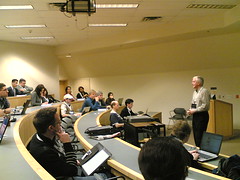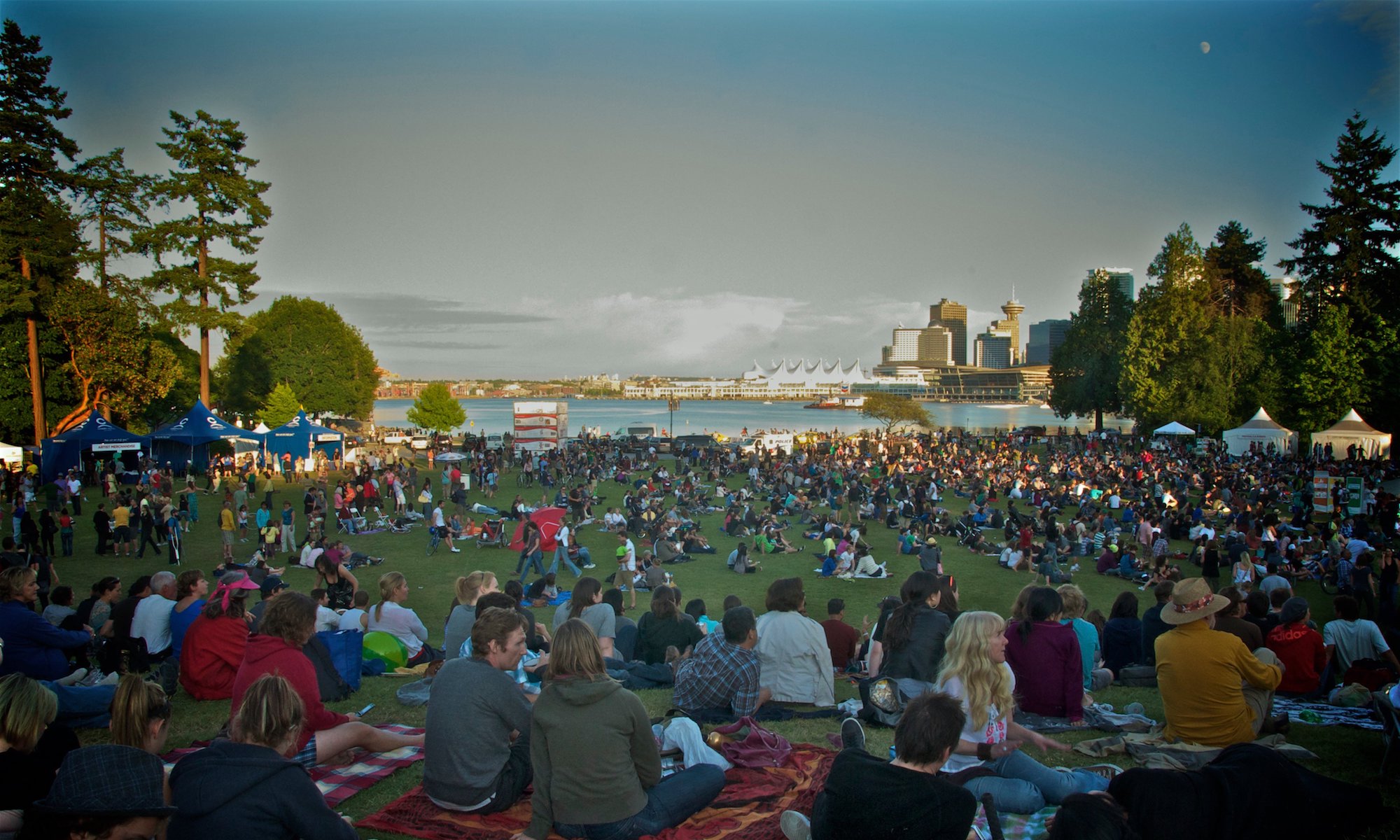Hanging out in Room #1 for this session, Getting Good Levels in Your Podcast with Bruce Sharpe. He has connections to one of the first podcasts out there, IT Conversations, and he wrote Levelator. I’m curious to hear about the theories behind this concept. Mainly, it’s a topic in support of Levelator, which I am a big fan and user of already.
Quick side note, just got out of my second session of the day: New Rules for New Communities. Lots of good discussion, but so much in so little time to really digest here right now. Number one thing taken away: don’t put the geeks in charge of the community, put those with people skills.
 Back to podcasting, four keys:
Back to podcasting, four keys:
1 – Record it well: If you put crap in, you’ll get crap out. My biggest thing with this is to work with what your budget can handle, then learn as much as you can about what you have. Cheap can still create great quality.
2 – Clean Up the Audio: Spend some time after recording to edit your content. Filters, noise reduction and lots of other digital editing lingo. I say, watch out for a learning curve here. If you don’t know much about editing audio, then be prepared to spend time with what you can do. As you progress, you’ll learn new things. It might be painful, but give yourself time.
Tip from the crowd: Sound cards are important, especially on PC’s. Investigate and invest in quality equipment to get quality stuff. Dell’s seem to be the worst, ThinkPad’s are mid-range.
3 – Edit out the not good stuff: “I’ll be right back”, “Ummm…”, essentially the nonsense stuff. I’ll be quick to say that this depends on the scope of your podcast. If you want to keep it personal, then do what you want. Professional realm of things? Consider this for sure. At the same time, this takes time to do. If you’ve got a few hours to chop up 40 minutes of audio, go for it. If time is of the essence, then you’ll have to make do.
4 – Get the levels right: It’s important to have a standard. Clipping sucks, and you don’t want to have things be too quiet. This is a very close examination of audio on the level of 1’s and 0’s. A good system of normalization is what you want to shoot for. This, once again, takes practice and time to master. It’s a combination of every step that Bruce has laid out.
Question about Mac, mid-range audio/podcast software, and I just gave a shout out to Ubercaster. It is in beta, but it has progressively gotten better over the last few months. Still, not in major release yet. GarageBand is a very good application as well.
The money shot: Levelator.
I’ll speak first hand that this has been a lifesaving piece of software. Remember step four? I can let Levelator do all of that digital manipulation for me to boost the audio levels to an optimum range for podcast to podcast. The Crazy Canucks has been saved by it numerous times.
No batch processing with this software just yet, so you’ll have to do this one at a time in the meantime. Tod Maffin asks if that will be added in the paid version with a laugh, but I wouldn’t be surprised. Oh yeah, Levelator is free. Also, this only does WAV or AIFF files, no MP3 support.
I’m taking it that a lot of people here have not heard of this software that are in this room. Also seems to be a lot of newbies to the whole podcasting realm in the room. It’s pieces of software like this that will piss off old school audio folks who have spent the hours and hours of doing steps one through four to apply this to audio for radio broadcast. Such is the way that the world changes.
Time for lunch.
